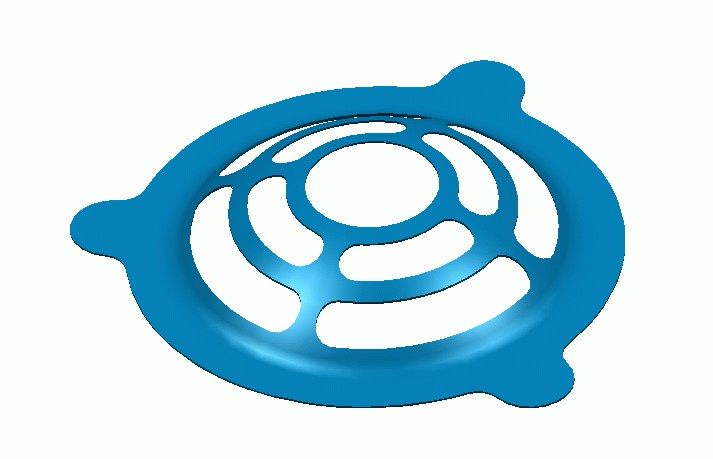The picture of your part was available earlier, but it's disappeared again, but if I remember correctly, it's not a deep dome, and it looks like a surface of revolution. If the slots are pierced from the blank first, then the latitudinal strips are bound to distort in the forming die, as well as the flange becoming non-circular, whereas if the slots are pierced after forming then, for cost reasons, the punches will be parallel, so that some slot edges will be angled.
What is the flat-wrap for? The flange of formed part will probably be trimmed last, and the 3 bolt holes being pierced at the same operation - to guarantee positional accuracy, it would be better to do it then, rather than add another operation. Without knowing exactly what this part is for it's not easy to imagine how much distortion you can accept, or how precise the flange profile has to be.
A dome is a synclastic surface, which is not readily developable, although several approximate methods have been tried over the years, I have used circular sectors to make templates for cutting out gores of carbon fibre to lay up on a paraboloidal mould. If they are kept narrow enough then a reasonable result may be obtained.
Another interesting way of developing a spherical form is the so called Orange Peel method, which is a spiral segment strip.
Anyway, back to your case, if you want to know what size blank sheet to start off with, you could assume it will be a circular piece and an approximate way of finding its radius would be to assume that the unpierced blank will have the same volume after forming, and that enough pressure will be on the blankholder to control wrinkling. Use the area of a centre cross-section of the flanged dome, including enough radius for the lugs, to find the length of a narrow rectangle whose height is the thickness of the sheet blank. This will be the radius of the blank, and add a bit on for trimming.
There is no instant Catia function to do it, that would take the fun out of it. The key to making the part is the tooling, and how much money can be spent on it.
If the Catia model has the slots having edges that are exactly normal to the dome surface, at any point, then the cost of making even one part would be phenominal, if the production engineering process was driven totally by the V5 model geometry. I would model the part according to how it was going to be made, not forgetting that the material thickness could reduce by up to 15% in the stretched area.

